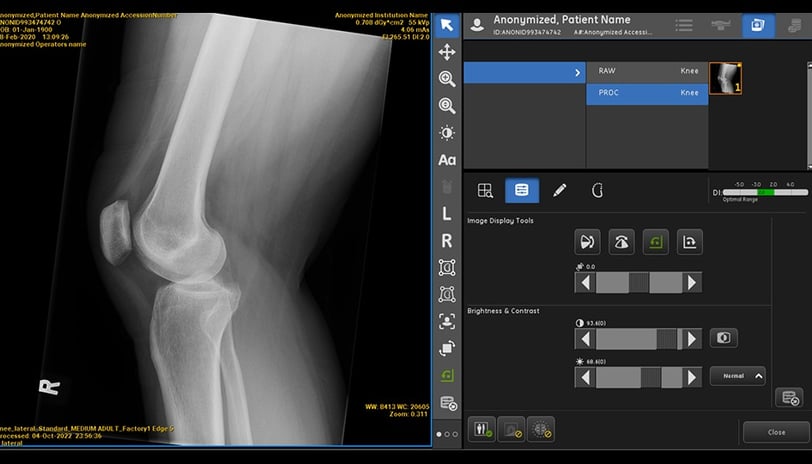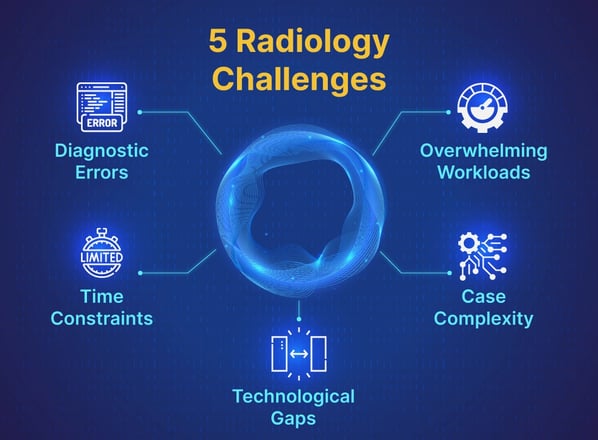AI and X-ray Imaging: A Partnership for Better Healthcare
Artificial Intelligence (AI) has emerged as a powerful tool in various sectors, and healthcare is one of the fields benefiting the most from these advancements. In radiology, particularly X-ray imaging, AI is revolutionizing how diagnostic images are analyzed, interpreted, and used in clinical decision-making. This partnership between AI and X-ray imaging is not only improving diagnostic accuracy but also enhancing efficiency, reducing workload, and ultimately offering better care to patients.
12/27/20243 min read


AI’s Role in X-ray Imaging
X-ray imaging is a crucial diagnostic tool used to detect a wide range of health conditions, from fractures and infections to tumors and other complex diseases. AI algorithms, particularly those based on machine learning and deep learning, are now capable of analyzing X-ray images with impressive speed and accuracy. By leveraging vast amounts of medical data and powerful computational models, AI is able to detect subtle patterns in images that might otherwise go unnoticed by human radiologists.
Key Benefits of AI in X-ray Imaging
Enhanced Diagnostic Accuracy: AI can identify abnormalities such as tumors, fractures, or infections in X-ray images, reducing the risk of missed diagnoses and improving patient outcomes.
Speed and Efficiency: AI processes X-ray images significantly faster than a human radiologist, allowing for quicker diagnoses and reduced waiting times for patients.
Consistent Results: Unlike humans, AI algorithms do not experience fatigue and can maintain consistent performance even after reviewing hundreds or thousands of images.
Real-World Applications
Several AI-powered applications are already in use in radiology, transforming how X-ray images are analyzed:
Fracture Detection: AI systems can quickly identify bone fractures in X-rays, allowing for timely treatment and minimizing the chances of complications.
Lung Disease Detection: AI is increasingly used in chest X-rays to detect conditions such as pneumonia, tuberculosis, and even early signs of lung cancer.
Breast Cancer Screening: AI-enhanced mammograms help radiologists detect small tumors that may be challenging to spot with the human eye, improving early diagnosis of breast cancer.
AI in Streamlining Radiology Workflows
Beyond image interpretation, AI also helps streamline workflows within radiology departments. Radiologists often face high workloads, and AI can assist in tasks like image triaging, where images are automatically categorized based on urgency, allowing radiologists to prioritize critical cases. AI can also support routine image enhancement, ensuring that the quality of X-ray images is optimal for diagnosis.
Key Workflow Enhancements
Automated Image Triage: AI can prioritize cases that show signs of acute conditions, ensuring that critical diagnoses are addressed first.
Image Preprocessing: AI tools can enhance X-ray images by removing noise and adjusting contrast, helping radiologists make more accurate interpretations.
Reporting Assistance: AI can assist in generating preliminary reports based on image analysis, allowing radiologists to focus more on patient interactions and complex diagnoses.
Challenges and Considerations
Despite the clear benefits, there are still challenges to the widespread adoption of AI in X-ray imaging:
Data Quality and Bias: AI algorithms are only as good as the data they are trained on. If the data is biased or not representative of diverse populations, AI systems may not perform well for all patients.
Data Privacy and Security: Since AI tools require access to sensitive patient data, ensuring privacy and complying with regulations like HIPAA is critical.
Collaboration with Radiologists: While AI provides valuable insights, it should not replace radiologists. Instead, AI should complement the skills of medical professionals, helping them make faster and more accurate decisions.
The Future of AI in X-ray Imaging
As AI continues to evolve, its potential in X-ray imaging is limitless. Future developments could see AI systems not only analyzing X-rays but also integrating data from other sources, such as electronic health records and patient history, to provide even more comprehensive diagnostic support. Additionally, AI could play a larger role in real-time diagnostics during imaging procedures, guiding radiologists as they scan patients.


